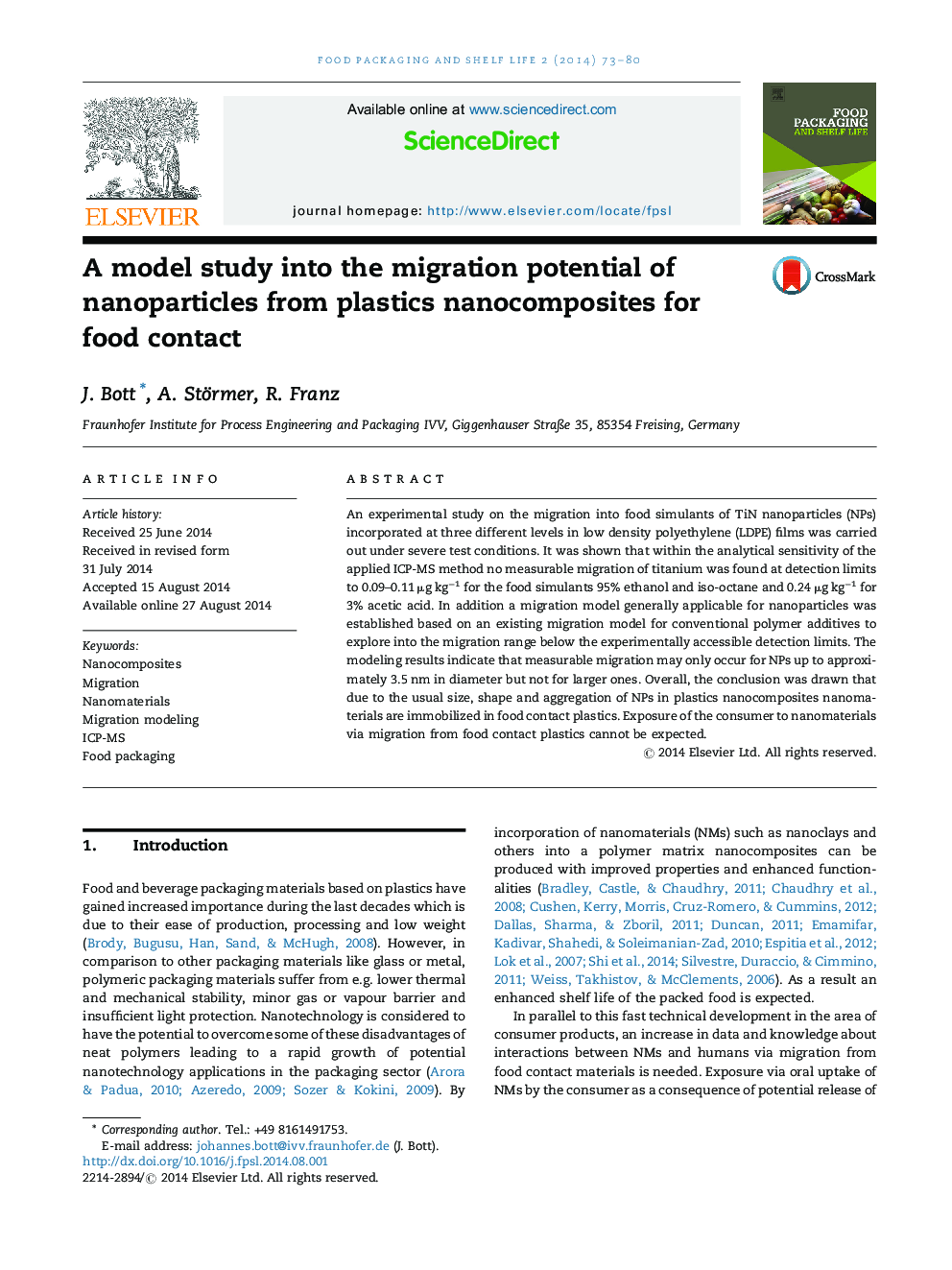| Article ID | Journal | Published Year | Pages | File Type |
|---|---|---|---|---|
| 19855 | Food Packaging and Shelf Life | 2014 | 8 Pages |
•A model study on the migration potential of nanoparticles (NP) from food contact plastics (FCP) was carried out.•Titanium nitride (TiN) was used as nanomaterial and LDPE as worst case food contact polymer.•Migration of TiN NP was not detectable under more severe test conditions than realistic ones.•A mathematical migration model for NP from polyolefins was established.•Experimental findings together with migration modeling indicate that migration of NP from FCP is not possible.
An experimental study on the migration into food simulants of TiN nanoparticles (NPs) incorporated at three different levels in low density polyethylene (LDPE) films was carried out under severe test conditions. It was shown that within the analytical sensitivity of the applied ICP-MS method no measurable migration of titanium was found at detection limits to 0.09–0.11 μg kg−1 for the food simulants 95% ethanol and iso-octane and 0.24 μg kg−1 for 3% acetic acid. In addition a migration model generally applicable for nanoparticles was established based on an existing migration model for conventional polymer additives to explore into the migration range below the experimentally accessible detection limits. The modeling results indicate that measurable migration may only occur for NPs up to approximately 3.5 nm in diameter but not for larger ones. Overall, the conclusion was drawn that due to the usual size, shape and aggregation of NPs in plastics nanocomposites nanomaterials are immobilized in food contact plastics. Exposure of the consumer to nanomaterials via migration from food contact plastics cannot be expected.
